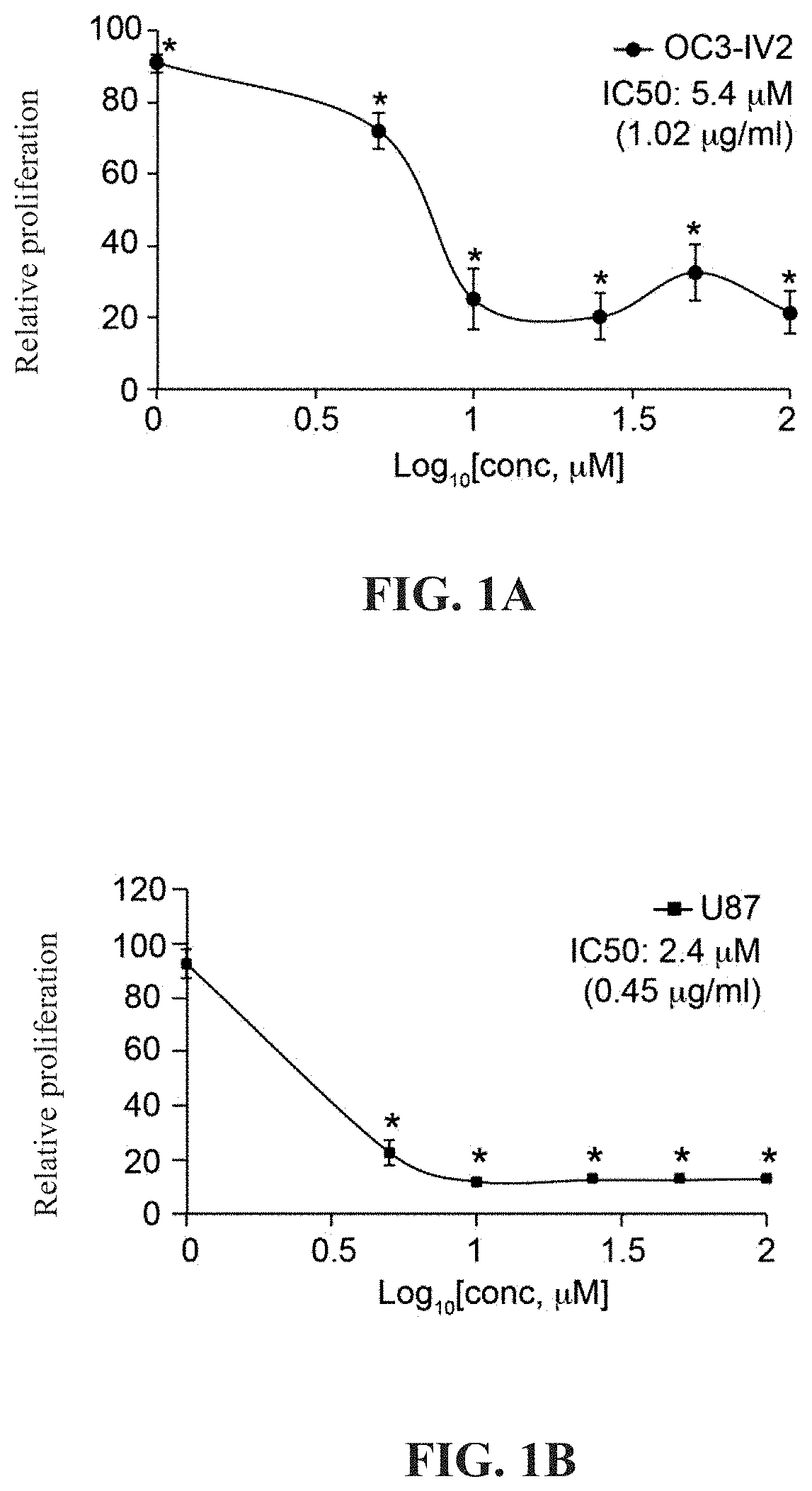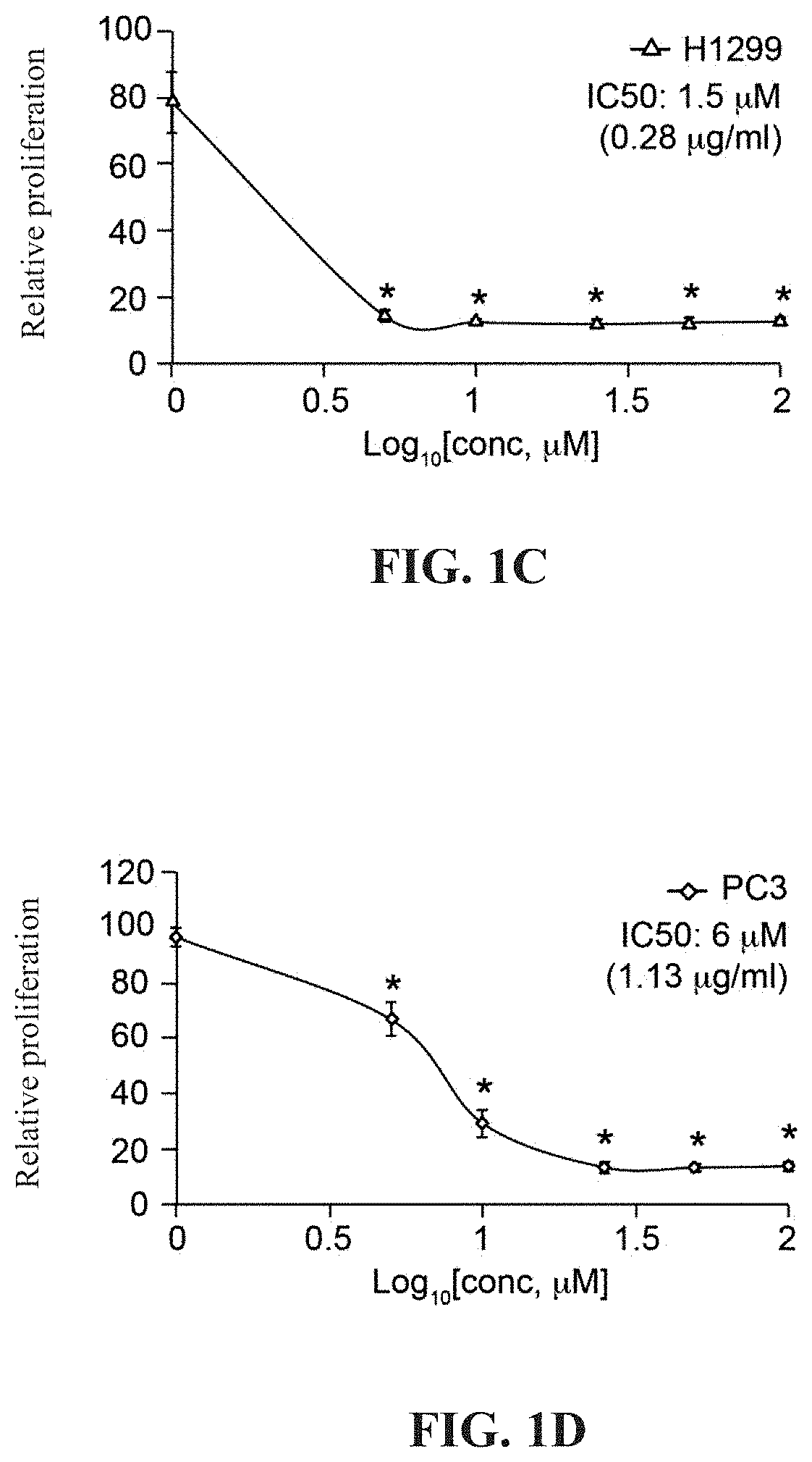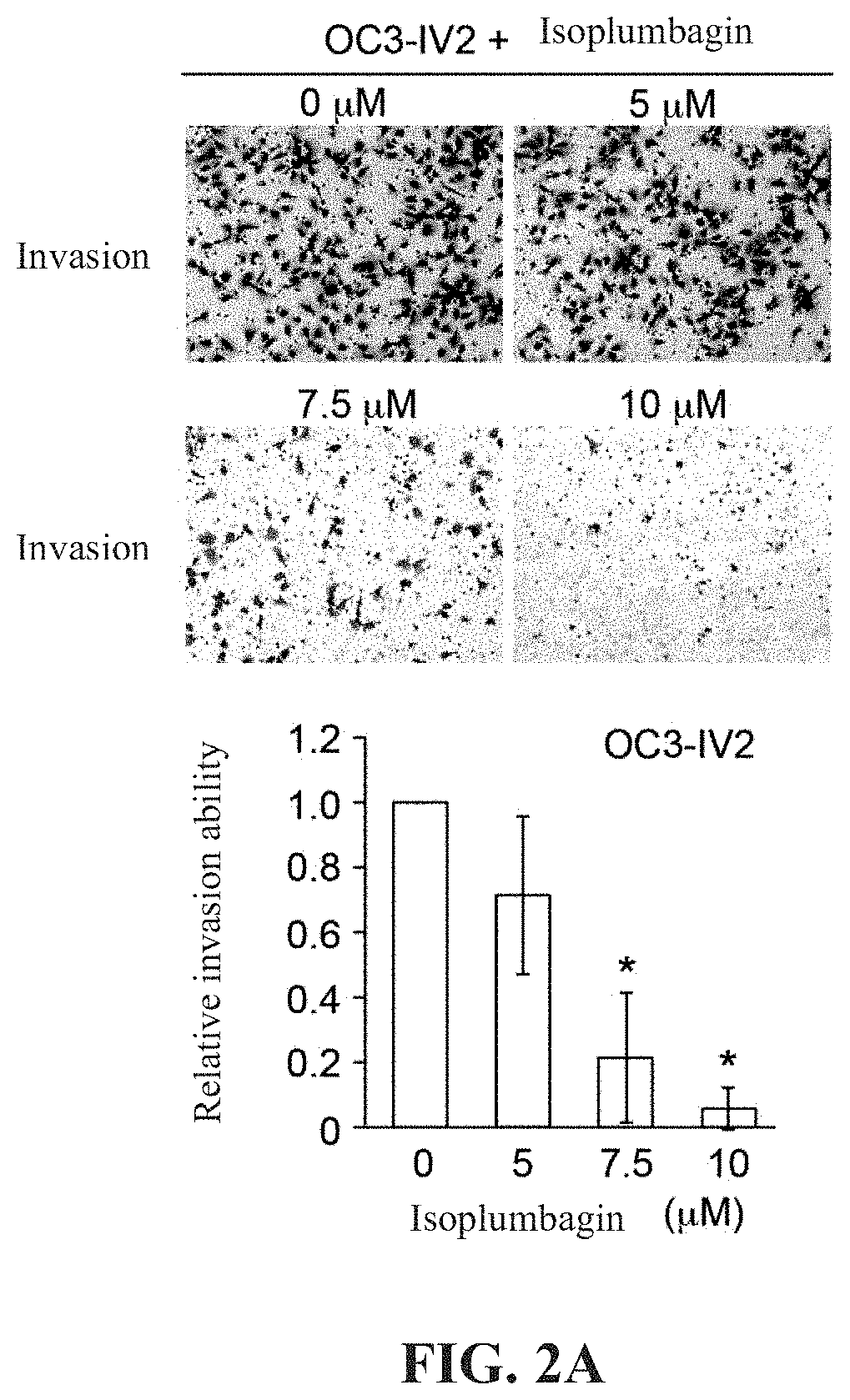Method for inhibiting proliferation and metastasis of cancer cells by using naphthoquinone derivative
a cancer cell and naphthoquinone technology, applied in the field of cancer cell proliferation and metastasis inhibition by naphthoquinone derivative, can solve the problems of difficult to solve, unsatisfactory therapeutic effect, and inability to control cell division, so as to inhibit tumor growth, inhibit proliferation and metastasis, and reduce mitochondrial function of cancer cells
- Summary
- Abstract
- Description
- Claims
- Application Information
AI Technical Summary
Benefits of technology
Problems solved by technology
Method used
Image
Examples
example 1
Inhibitory Effect of Isoplumbagin on Survival of Oral Squamous Cell Carcinoma Cells (OC3-IV2), Human Primary Glioblastoma Cells (U87), Human Non-small Cell Lung Carcinoma Cells (H1299) and Prostate Cancer Cells (PC3)
[0042]This example explores the inhibitory effect of isoplumbagin on survival of oral squamous cell carcinoma cells (OC3-IV2), human primary glioblastoma cells (U87), human non-small cell lung carcinoma cells (H1299) and prostate cancer cells (PC3).
[0043]Isoplumbagin (AKOS006277326, acquired from AKos GmbH, Steinen, Germany) was dissolved in dimethyl sulfoxide (DMSO) and added to the medium, so that the final concentration of DMSO was less than 0.1%. The survival rate of isoplumbagin on OC3-IV2, U87, H1299 and PC3 cell lines was determined using the 3-(4,5-dimethylthiazol-2-yl)-2,5-diphenyltetrazolium bromide (MTT; Sigma-Aldrich) assays. 3×103 cells / well were seeded in 96-well plates. After incubation for 24 h, cells were treated with isoplumbagin at various concentratio...
example 2
[0045]Inhibitory Effect of Different Doses of Isoplumbagin on Invasion for Oral Squamous Cell Carcinoma Cells (OC3-IV2), Human Primary Glioblastoma Cells (U87), Human Non-small Cell Lung Carcinoma Cells (H1299), Prostate Cancer Cells (PC3) and Cervical Cancer Cells (Hela) Assessed with Boyden Chamber Assays
[0046]In this example, the inhibitory effect of isoplumbagin on invasion for oral squamous cell carcinoma cells (OC3-IV2), human primary glioblastoma cells (U87), human non-small cell lung carcinoma cells (H1299), human prostate cancer cells (PC3) and human cervical cancer cells (Hela) was observed using the Boyden chamber assays.
[0047]The source and culture method of oral squamous cell carcinoma cells (OC3-IV2), human primary glioblastoma cells (U87), human prostate cancer cells (PC3), human non-small cell lung carcinoma cells (H1299) and human cervical cancer cells (Hela) were the same as those described above.
[0048]Cells were harvested by trypan and resuspended in a serum-free ...
example 3
Identification of Candidate Target Proteins of Isoplumbagin and Confirmation of Isoplumbagin as a Substrate of NQO1
[0050]In this example, target prediction softwares, Swiss Target Prediction (SIB Swiss Institute of Bioinformatics, Lausanne, Switzerland), Pharmmapper (Xiaofeng Liu et al, Nucleic Acids Res. 2010 July; 38(Web Server issue):W609-14.), Polypharmacology Browser (Awale M et al, J Cheminform 2017 Feb. 21; 9:11.) and Similarity ensemble approach (Keiser M J et al, Nat Biotechnol. 2007 February; 25(2):197-206.), followed by the Database for Annotation, Visualization and Integrated Discovery (DAVID) were used to identify candidate target proteins of isoplumbagin and confirm isoplumbagin is a substrate of NAD(P)H quinone dehydrogenase 1 (NQO1). To perform molecular docking of NQO1 dimer and isoplumbagin, the crystallographic structure of NQO1 (PDB code 2F1O, comprising four NQO1 dimers (A / C chain dimer, B / D chain dimer, E / F chain dimer, G / H chain dimer) and isoplumbagin (CID: 3...
PUM
| Property | Measurement | Unit |
|---|---|---|
| temperature | aaaaa | aaaaa |
| pore size | aaaaa | aaaaa |
| wavelengths | aaaaa | aaaaa |
Abstract
Description
Claims
Application Information
 Login to View More
Login to View More - R&D
- Intellectual Property
- Life Sciences
- Materials
- Tech Scout
- Unparalleled Data Quality
- Higher Quality Content
- 60% Fewer Hallucinations
Browse by: Latest US Patents, China's latest patents, Technical Efficacy Thesaurus, Application Domain, Technology Topic, Popular Technical Reports.
© 2025 PatSnap. All rights reserved.Legal|Privacy policy|Modern Slavery Act Transparency Statement|Sitemap|About US| Contact US: help@patsnap.com



